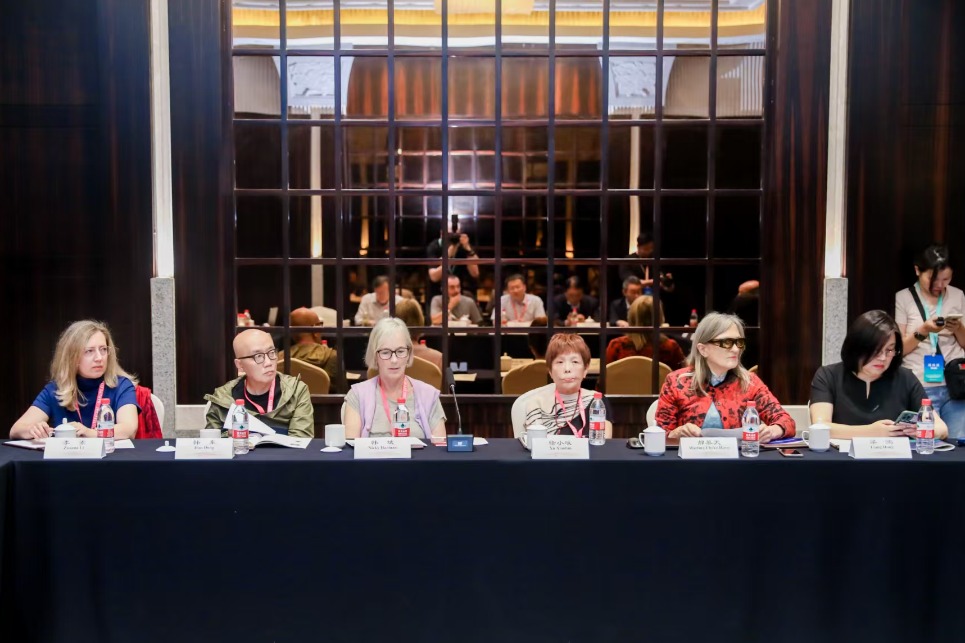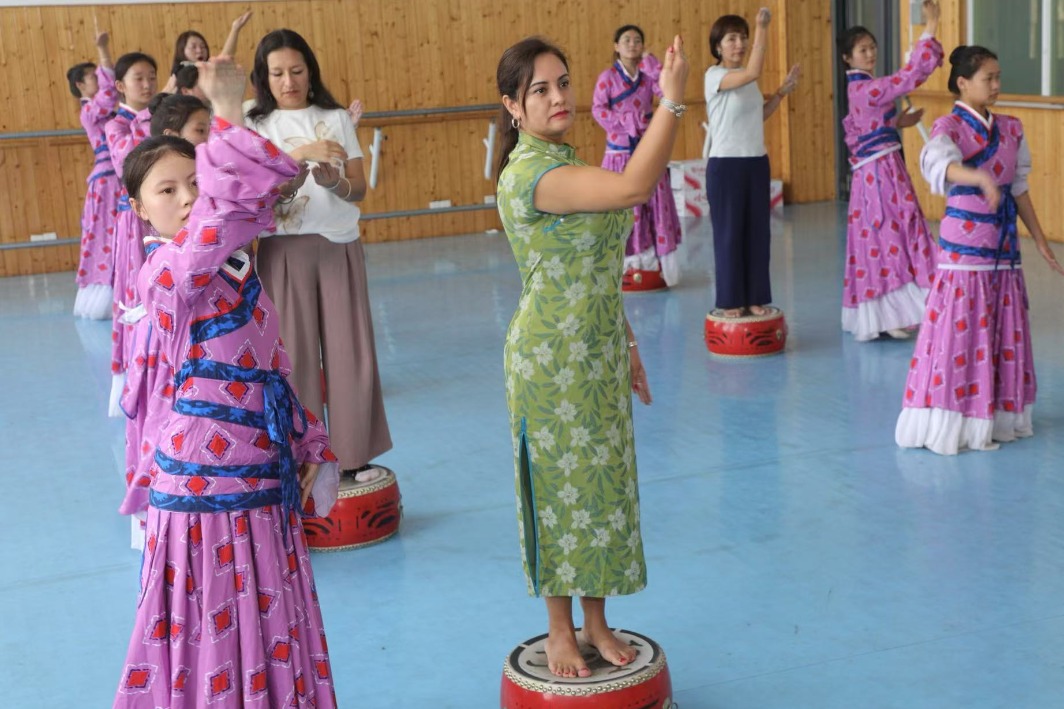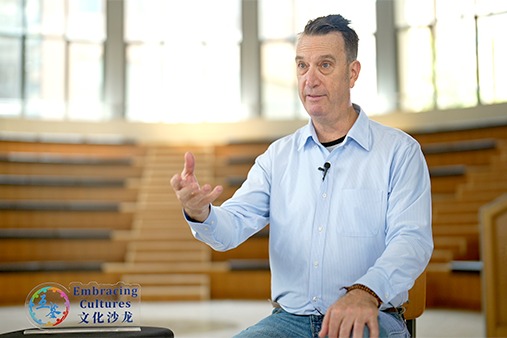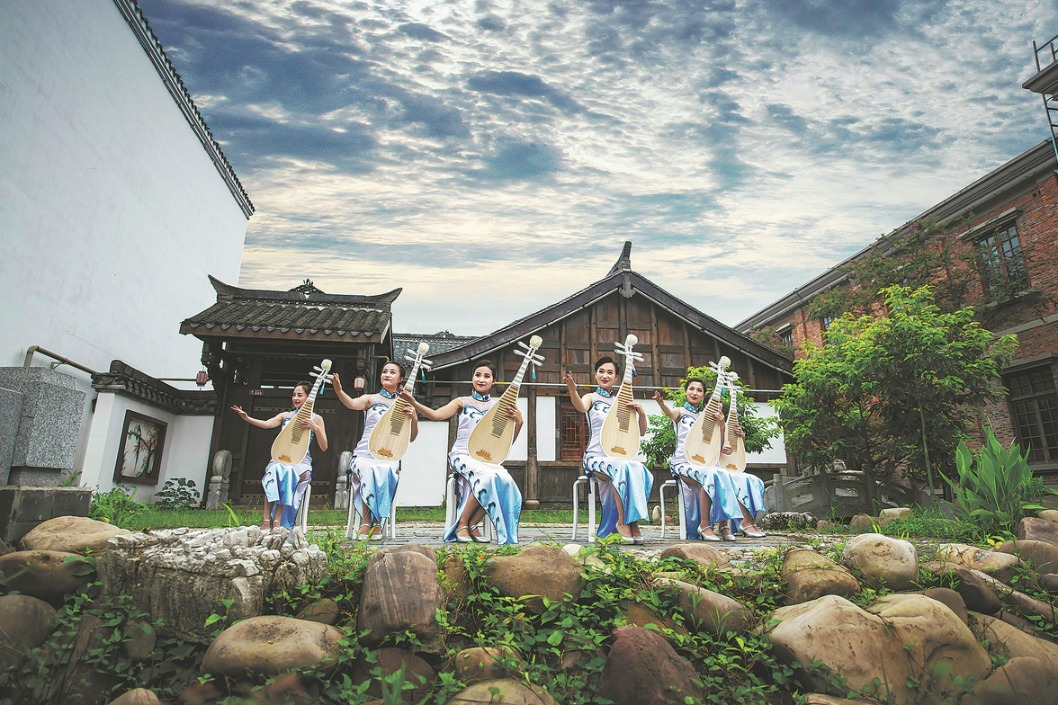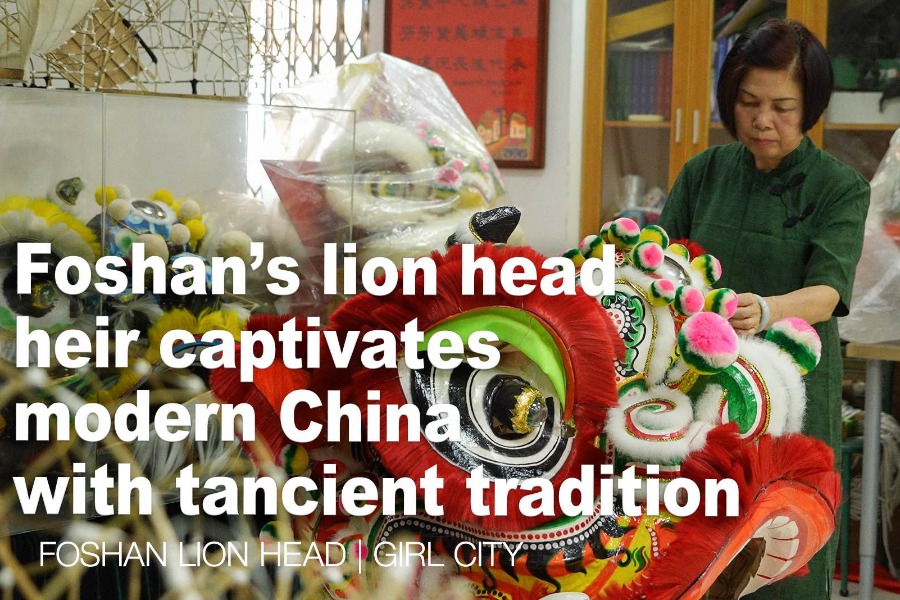Town becomes instrumental in global violin manufacturing

NANJING/MOSCOW — It might be hard to imagine that every year 40 percent of the world's violins are produced in Huangqiao, a town in East China once famous for its sesame bread rather than music.
A stroll through the streets of Huangqiao, Taixing city, Jiangsu province, reveals a striking transformation. A violin-shaped lake graces the town square, statues of violinists are scattered around and over 30,000 people work in the violin industry producing 700,000 string instruments annually. Almost every child in the town plays the instrument.
Huangqiao-made violins have gained a stellar international reputation. In Moscow, Russia, Daniyar Abdrakhimov sells these violins in his music shop.
"Not expensive, fine production, excellent quality and good sound. Even beginners can play them," Abdrakhimov says.
Huangqiao has earned the nickname "Cremona of the East", a nod to the Italian city where the violin was born.
The story begins in the 1960s when violin workshops began to sprout in major Chinese cities like Beijing and Shanghai. Several natives of Huangqiao, who had mastered the craft in Shanghai, returned home and opened a fitting factory.
One of its apprentices, Li Shu, crafted Huangqiao's first violin in the early 1970s.
Today, Li is the chairman of Jiangsu Fengling Musical Instrument Group, a company that exports violins to nearly 90 countries and regions, including the United States, Italy and Russia.
"It's no easy feat to have Chinese-made 'Western musical instruments' enter the overseas market," Li says, emphasizing that innovative techniques have made Huangqiao violins globally competitive.
Traditionally, violin wood must be dried for over 50 years to ensure a good sound and prevent cracking, as this process reduces water, sugar and resin. Li's company developed a microbiological technology using enzymes found in wine to remove large amounts of impurities, thus shortening the drying time by over 20 years.
After China joined the World Trade Organization, the violin industry in Huangqiao rapidly expanded, leveraging high quality and low prices to swiftly enter the international market, Li adds.
Similarly, Xu Xiaofeng, a veteran luthier in Huangqiao, believes that a commitment to high quality has made Huangqiao violins "a regular guest at international musical instrument exhibitions".
Though Huangqiao has embraced mass production, Xu champions the art of handicrafting, which he believes distinguishes a violin from those made on assembly lines. The process involves configuring the board, making the head, tuning the acoustics and shaping the deck, all of which affect the timbre.
It takes about 200 steps to make a violin. Xu saws each board and drills every hole by hand.
Xu still remembers the reaction of a foreign customer upon playing one of his earliest products.
"I asked him how he rates this violin and he was like, 'It is unimaginable that you made such a product by hand!'," Xu recalls.
Xu also established a violin-making workshop in Huangqiao, where he has trained hundreds of violin makers. Today, the town boasts over 200 violin manufacturing and support enterprises.
The violin industry has not only created jobs for Huangqiao residents but has also enriched their lives outside of work. The local government promotes music education and students from first to fifth grade can learn to play the violin. Many babies in Huangqiao even play with violins as toys.
"They not only learn about their hometown's industry but also develop their hobbies and artistic tastes through learning music," says Qian Hui, a violin teacher in Huangqiao.
Many students have pursued professional music careers, continuing their studies at prestigious music academies both at home and abroad, Qian adds.
Since 2017, Huangqiao has been a permanent venue for the Make Music Day in China. The day was started in France in 1982. Every year, thousands of musicians, orchestras and music lovers worldwide are welcomed to China's "violin capital", bound by their love for music.
What began as a modest effort by a few returning craftsmen has blossomed into a global symphony, echoing far beyond the town's borders.
Xinhua



















